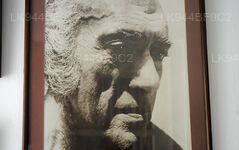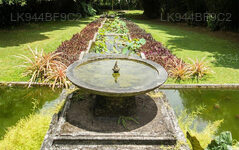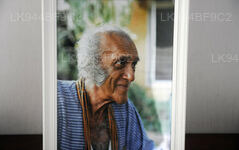
Bentota City
Bentota, a tropical paradise on Sri Lanka's southwest coast, invites you to unwind in its pristine beauty. Discover golden beaches, enjoy water sports on the Bentota River, and visit the vibrant Bentota Bazaar. Luxurious resorts, rich cultural experiences, and scenic landscapes make it an ideal coastal retreat.
Bevis Bawa
Bevis Bawa was born on the 26th of April 1909 to Benjamin Bawa, a noted lawyer, and his wife, a lady of Dutch-Burgher ancestry. With his pedigree, he went on to Royal College, where he apparently was quite the young rebel. When offered the chance to study art in England, he turned it down on the grounds that you either have it in you or don’t, and chose to focus his efforts on learning to be a planter instead.
In 1929, Bevis went on to join the Ceylon Light Infantry, a gentleman’s regiment, where he impressed everyone so much that he was selected to be AIDE-DE-CAMP to the Governor of Ceylon. It was a position that he went on to hold under no less than four Governors – Stubbs, Caldecott, Monck-Mason Moore & Soulbury – while fighting off the unwanted attentions of Colombo society who saw him as one of the most eligible bachelors around.
During the 50’s & 60’s he made a name for himself by writing a newspaper column, Briefly by Bevis, Initially about the genteel subject of landscape gardening before he moved on to start lampooning the pomposities of local society, he prose lancing and lacerating with delight those targets he found most appealing; wannabes, great pretenders & social climbers. He had a stab at landscape gardening as a full-time profession (a modern day ‘Capability’ Brown) but soon afterward Bevis decided to call it a day, and retreated to the comfort of “BRIEF”
Bevis Started work on Brief in 1929, when his mother left it to him. It was a rubber plantation then, and ever the pragmatist, when choosing where to build his house he apparently picked the bit which had the worst-performing rubber trees and chopped them down. Bevis’s younger brother Geoffrey was the most celebrated Architect Sri Lanka ever produced; but while he chose a more formal structured approach to his work, Bevis delighted in taking more playful approach. However what Bevis did with his gardens and sculptures and much in common with what Geoffrey did with his houses and spaces. Their many creations were uniquely imbued with a sense of the spirit of the place; that deep and almost primal connection between the surroundings and the creations they inspired.
About Galle District
Galle is a city situated on the southwestern tip of Sri Lanka, 119 km from Colombo. Galle is the best example of a fortified city built by Europeans in south and Southeast Asia, showing the interaction between European architectural styles and south Asian traditions. The Galle fort is a world heritage site and the largest remaining fortress in Asia built by European occupiers.
Galle is the best example of a fortified city built by Europeans in south and Southeast Asia, showing the interaction between European architectural styles and south Asian traditions. The Galle fort is a world heritage site and the largest remaining fortress in Asia built by European occupiers.
Galle is a sizeable town, by Sri Lankan standards, and has a population of 91,000, the majority of whom are of Sinhalese ethnicity. There is also a large Sri Lankan Moor minority, particularly in the fort area, which descend from Arab merchants that settled in the ancient port of Galle.
About Southern Province
The Southern Province of Sri Lanka is a small geographic area consisting of the districts of Galle, Matara and Hambantota. Subsistence farming and fishing is the main source of income for the vast majority of the people of this region.
Important landmarks of the Southern Province include the wildlife sanctuaries of the Yala and Udawalawe National Parks, the holy city of Kataragama, and the ancient cities of Tissamaharama, Kirinda and Galle. (Although Galle is an ancient city, almost nothing survives from before the Portuguese invasion.) During the Portuguese period there were two famous Sinhalese poets called Andare who was from Dickwella and Gajaman Nona who was from Denipitiya in Matara District, composing poems on common man.

























